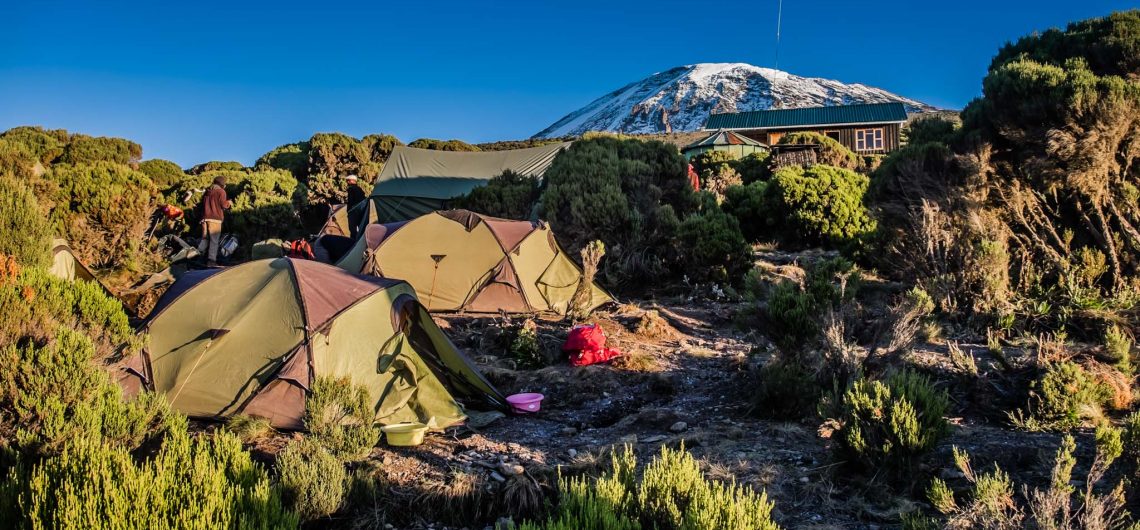It is an amazing feeling to climb Kilimanjaro to the top. A sense of accomplishment, determination, and the ability to push your body to the limit. Failing to plan is planning to fail. Mount Kilimanjaro climbs require months of planning and getting yourself into a psyched mode, physically and mentally. In our previous article Preparing for your climb, we saw that mental and physical preparation is requisite for the success of your climb. Climbing is a social process, even the pros do not go it alone.
Make time to know and create friendships during your climb. Remember it is not all about getting to the top or who gets in record time but enjoying the process and giving a helping hand to those in need of such. Your ascent leads to meeting new friends and who knows, maybe a business deal or lead can be formed; make the most out of it.
A climb is also a socializing process, make most out of it.
The climbs are always accompanied by experienced guides and porters no matter the route you chose for your climb. They are experienced and thus they are a little bit quicker and so you should not try to keep up with them as they carry heavy loads with them. You should walk slowly resting a lot and taking photos abundantly. A hurried ascent means your body does not get the chance to acclimatize and hence your chances of conquering the tower are minimized.
Acclimatization plays a major role in the success of your ascent. Acclimatization is the process by which an individual organism adjusts to a gradual change in its environment such as a change in humidity, temperature and such. So crucial is the process in that it ensures an optimal and sustained performance across a range of environmental conditions. On your Mt. Kilimanjaro climb, acclimatization will take place in a brief duration of time from a few days to weeks.
Slow and steady climb enables you to acclimatize.
If you rush your climb you risk the possibility of altitude sickness due to lesser time for your body to acclimatize. Altitude sickness better known as Acute Mountain Sickness (AMS) altitude is the pathological effect of high altitude on humans, caused by acute exposure to low partial pressure of oxygen at high altitude. It commonly occurs above 2,400 metres (8,000 feet).
The symptoms presented are non specific but resemble a case of ‘ a hangover, carbon monoxide poisoning or flu. Even harder is the fact that it’s not possible to predict who is likely to be affected by altitude sickness, as there are no specific indicators and factors correlating with a susceptibility to altitude sickness. However, most people can ascend to 2,400 metres (8,000 ft) without difficulty. High altitude 1,500 to 3,500 metres (4,900 to 11,500 ft) is where physiological effects of diminished inspiratory oxygen pressure maybe seen including decreased exercise performance and increased ventilation.
At very high altitude 3,500 to 5,500 metres (11,500 to 18,000 ft) – extreme hypoxemia (deficiency of oxygen in arterial blood) may occur during exercise, during sleep, and in the presence of high altitude pulmonary edema or other acute lung conditions. The major symptom used to diagnose altitude sickness is headaches.
Its imperative to note that headache is also a symptom of dehydration therefore adequate hydration is advised. For altitude sickness to be indicated a headache has to occur in combination with the following: peripheral oedema (swelling of hands, feet, and face), general malaise (feeling of general discomfort or uneasiness), drowsiness, persistent rapid pulse, nosebleed, shortness of breath upon exertion, pins and needles, insomnia, dizziness or lightheadedness, fatigue or weakness, nausea or vomiting and lack of appetite.
Trek in groups and lend a helping land to others, you might need it later!
The best way to avoid altitude sickness is by ascending and descending slowly. Also, stay clear of tiring activity such as hiking and skiing in the first 24 hours at high altitude as this decreases the symptoms of altitude sickness. Also, avoid alcohol as it leads to dehydration which worsens altitude sickness. The ideal strategy is to ‘climb-high, sleep-low’. This means you climb slowly to high altitudes during the day and sleep at a lower altitude at night.
This process should be repeated a few times, each time extending the time spent at higher altitudes to let the body adjust to the oxygen level there, a process that involves the production of additional red blood cells. This is very important as statistics indicate that annually about 1,000 climbers are evacuated from the mountain, and around 10 deaths are reported. The major cause of death is altitude sickness. Remember that the rate of ascension is important and not the height, therefore, climb slowly and your body will have ample time to acclimatize.
Slow but sure is the pace and do not forget to be on the look out for injuries on your feet, ankles, knees, pelvis, spine, shoulders, arms, wrists, hands and body. Most of these might occur together with the overusing of your musculature. Protect yourself always by resting a lot in between different circuits so as to replenish your energy levels and prevent burnouts, taking it easy, one step, one circuit at a time; this is not a relay race, and finally, know when to quit especially when it becomes painful.
Do not push yourself: the far you have come is the farthest your body can take and that is really what matters. Most climbers have returned for a second even third time to attempt a summit. Lastly remember to stretch and warm up before every climb and double no, triple check your anchors, belay setup, your knots, and gears. Now that you know what to expect on the actual climb, check the next article on Marangu Route, one of the most popular Kilimanjaro climbing routes. All the best in your quest to summit the ‘roof of Africa’ in the beautiful land of Tanzania.
![]()


Comments